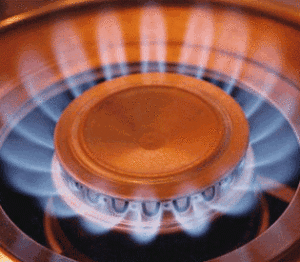 Natural gas was mostly steady on Tuesday as overnight forecasts saw no significant changes, calling for mild and active weather across the US through the end of the month.
Natural gas was mostly steady on Tuesday as overnight forecasts saw no significant changes, calling for mild and active weather across the US through the end of the month.
Natural gas for delivery in June traded 0.43% higher at $2.814 per million British thermal units at 7:25 GMT, shifting in a daily range of $2.819-$2.785. The contract slid 2.71% on Monday to $2.802 per mBtu after it settled last week 3.75% higher.
According to NatGasWeather.com, natural gas demand in the US will be very low compared to normal through May 18th, with more bearish headwinds to come the following seven days.
A strong spring storm tracking across the East Coast will bring showers and thunderstorms today, while the north-central US sees a round of somewhat stronger heating demand as cooler air sweeps through and pushes readings several degrees below normal. Cooler temperatures will also infiltrate northern Texas and the southern Plains as the week progresses, limiting cooling demand as highs retreat into the 70s and 60s, while highs over the Southeast remain in the upper 80s and 90s.
The western US enjoyed a warm start to the week but Pacific weather systems arriving this weekend will bring a round of cooling, while high pressure strengthens over the southern and eastern regions, especially over Texas, where highs will reach the 80s and lower 90s to increase cooling demand moderately.
Active weather will continue across the US next week as well, with widespread showers and strong thunderstorms, NatGasWeather.com predicted. The countrys southern and eastern regions will remain warmer-than-usual, while the West is slightly cooler than normal due to Pacific systems tracking through, and the North is mostly seasonal.
Readings
According to AccuWeather.com, the high in New York on May 12th will be 88 degrees Fahrenheit, 18 above usual, before dropping to the low-mid 70s over the following five days. Chicago will peak at 59 degrees today and tomorrow, 10 below normal, before jumping to 77 degrees on May 15th.
Down South, readings in Houston will max out at 82-85 degrees the next three days, compared to the average 85, followed by a jump to 89-90 degrees on May 16-17th. On the West Coast, the high in Los Angeles tomorrow will be 69 degrees, 5 below usual, with maximum temperatures set to range between 65 and 70 degrees through May 25th.
Inventories
The Energy Information Administration reported last Thursday that US natural gas stockpiles rose by 76 billion cubic feet in the week ended May 1st, an inch above analysts’ median projections for a 75-bcf increase. Total gas held in US storage hubs amounted to 1.786 trillion cubic feet, narrowing a deficit to the five-year average of 1.853 trillion to 3.6%, or 67 bcf, from 4.2% the previous week. Inventories were at a surplus of 71.1% compared to year-ago stockpiles of 1.044 trillion cubic feet.
This Thursday’s report will reflect a much larger gap to the average, likely around +125 bcf, as temperatures even across the North warmed up last week. Moreover, with mild readings expected to continue, keeping both heating and cooling demand in check, triple-digit builds are likely to extend into June before summer cooling demand kicks in. The five-year average inventory gain for the seven days ended May 8th is +82 bcf, while stockpiles rose by 101 bcf a year earlier.
The report after, due out on May 21st, will likely reflect a slightly smaller inventory build, as compared to the average, due to this week’s brief period of cooling across the north-central US. The five-year average stockpiles gain for the seven days ended May 15th is 89 bcf, while inventories rose by 106 bcf during the comparable period a year earlier.
Pivot points
According to Binary Tribune’s daily analysis, June natural gas futures’ central pivot point stands at $2.844. In case the contract penetrates the first resistance level at $2.893 per million British thermal units, it will encounter next resistance at $2.983. If breached, upside movement may attempt to advance to $3.032 per mBtu.
If the energy source drops below its S1 level at $2.754 per mBtu, it will next see support at $2.705. In case the second key support zone is breached, the power-station fuel’s downward movement may extend to $2.615 per mBtu.
In weekly terms, the central pivot point is at $2.826. The three key resistance levels are as follows: R1 – $2.942, R2 – $3.003, R3 – $3.119. The three key support levels are: S1 – $2.765, S2 – $2.649, S3 – $2.588.




